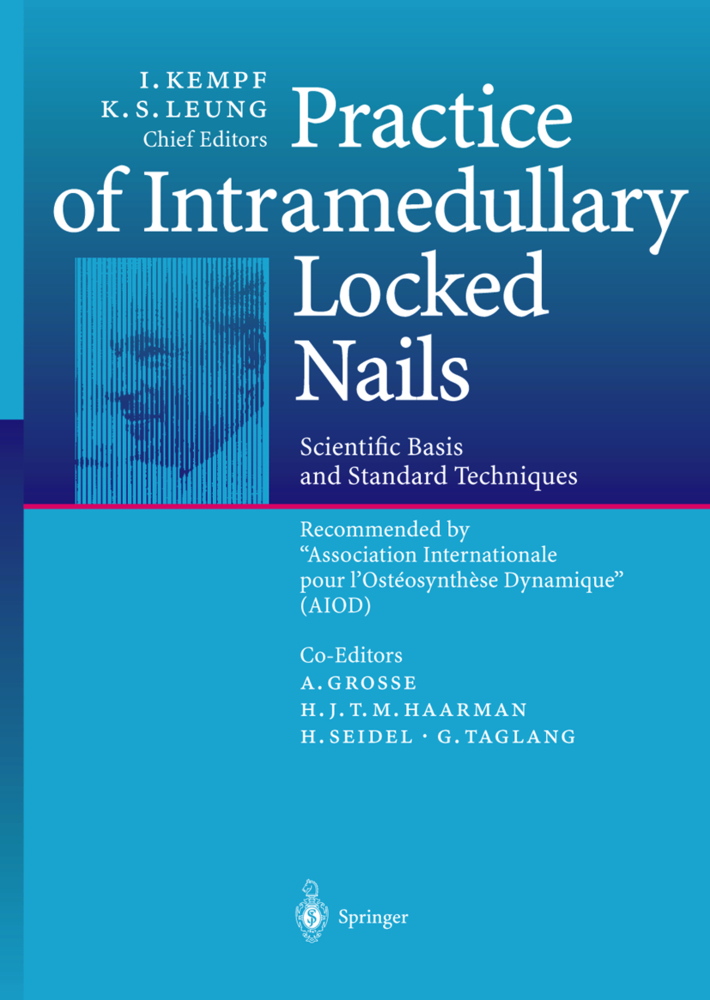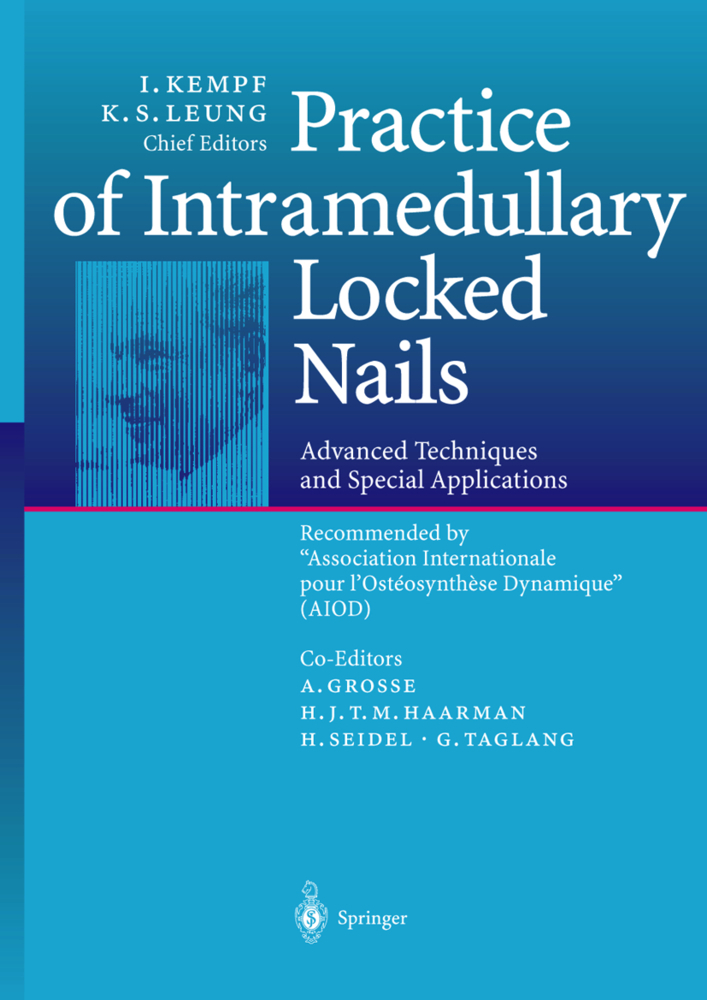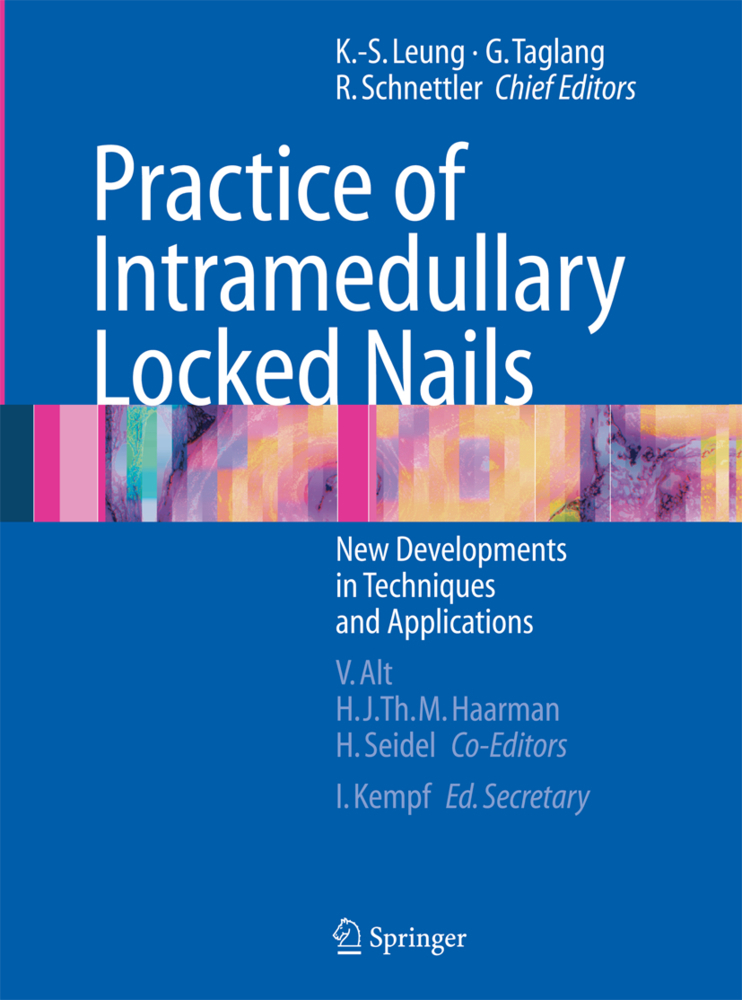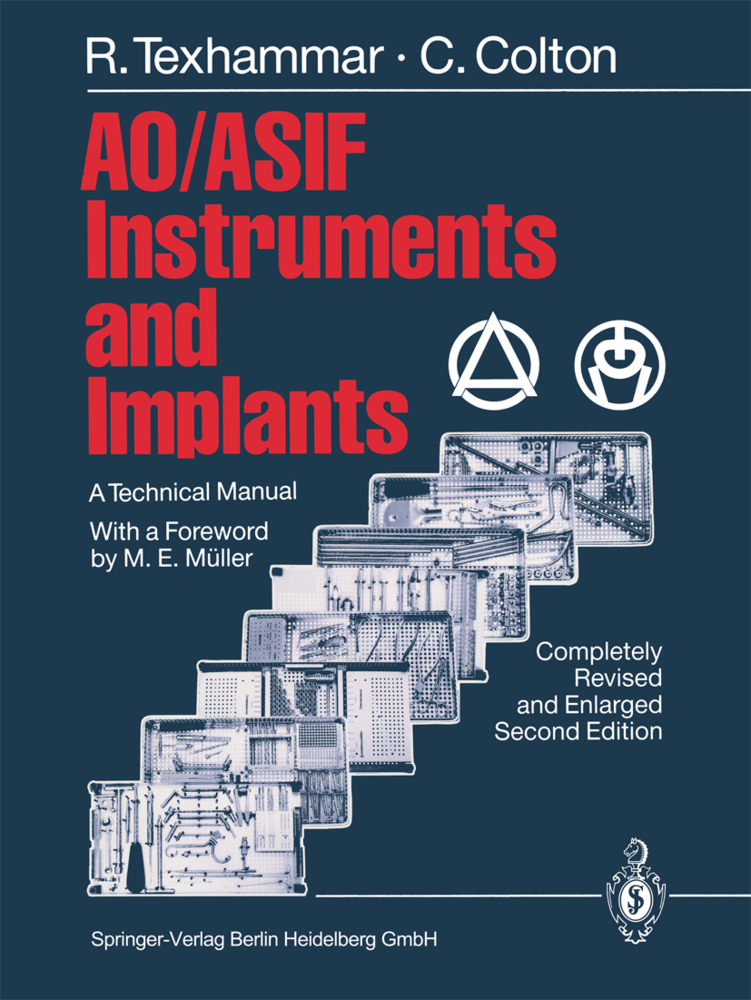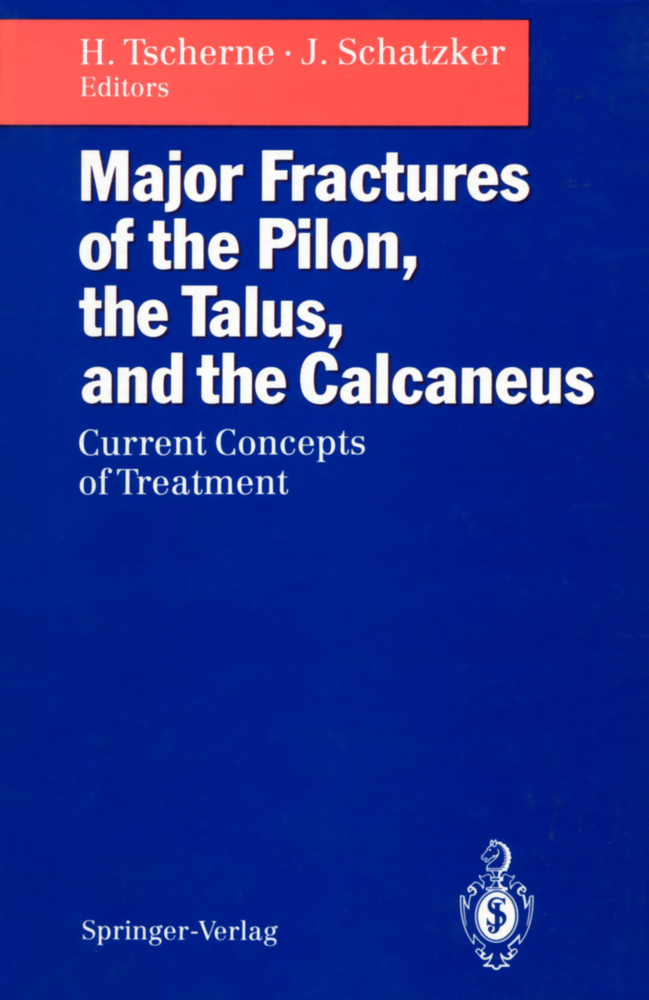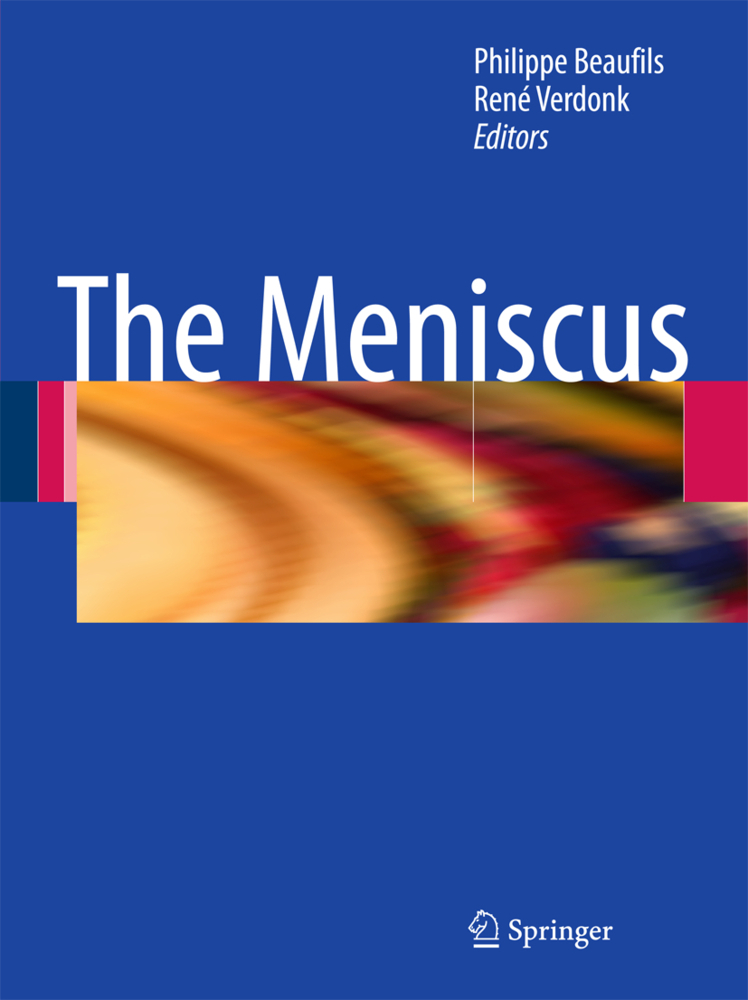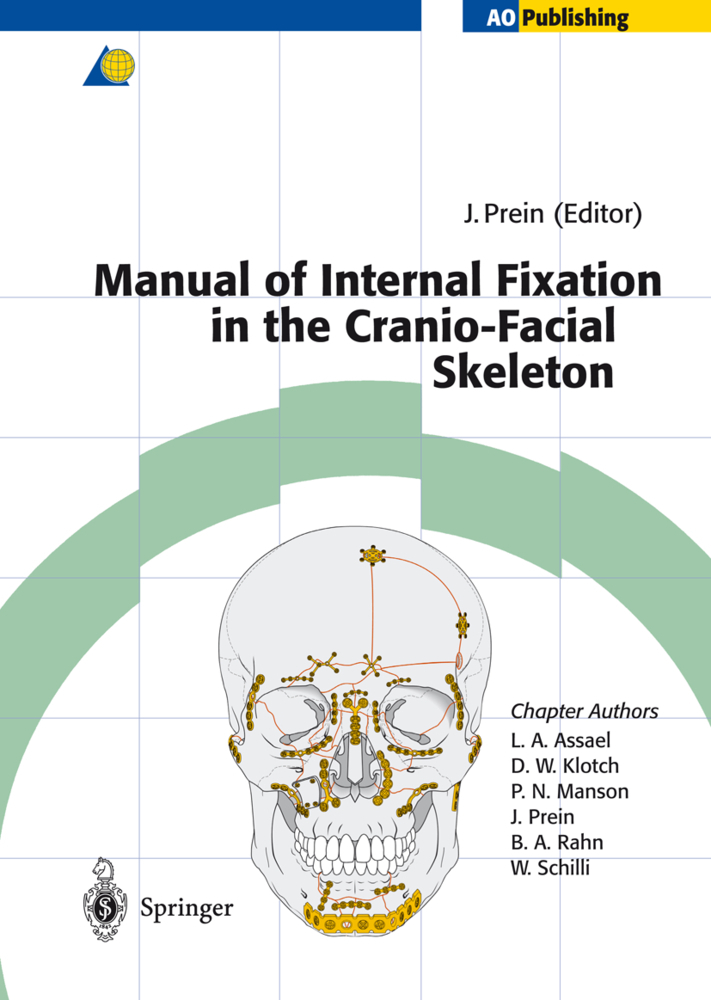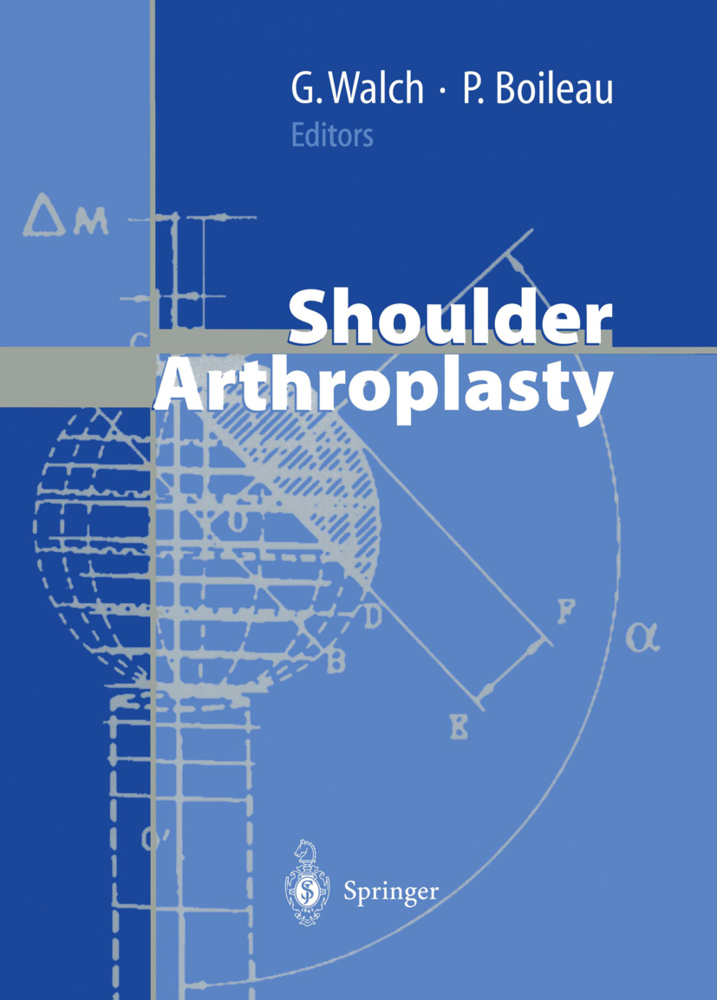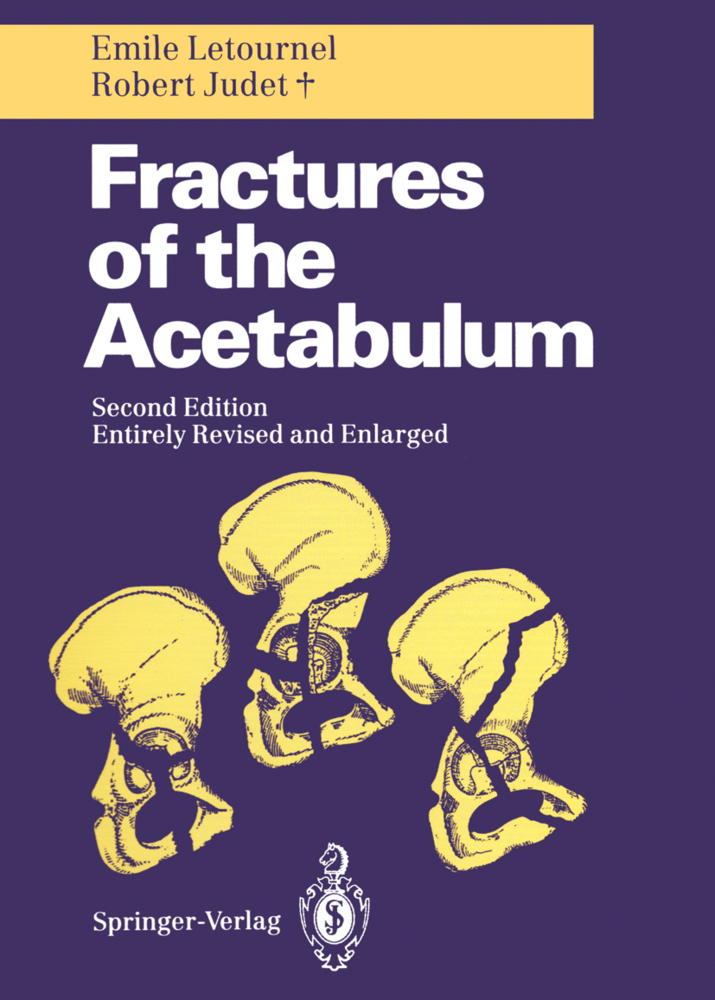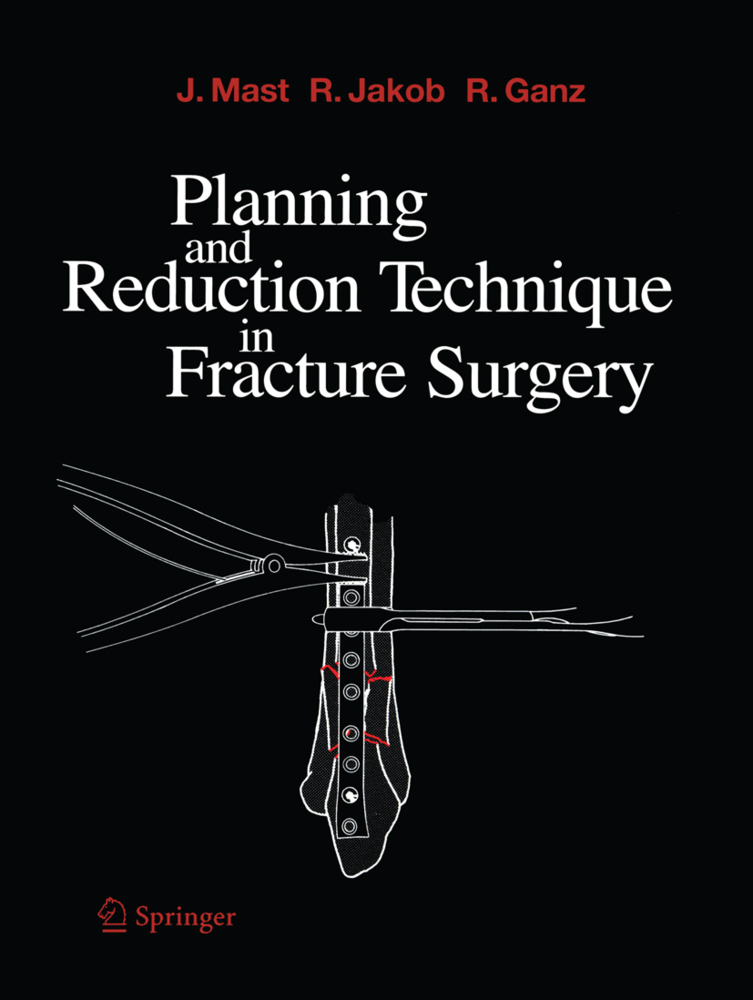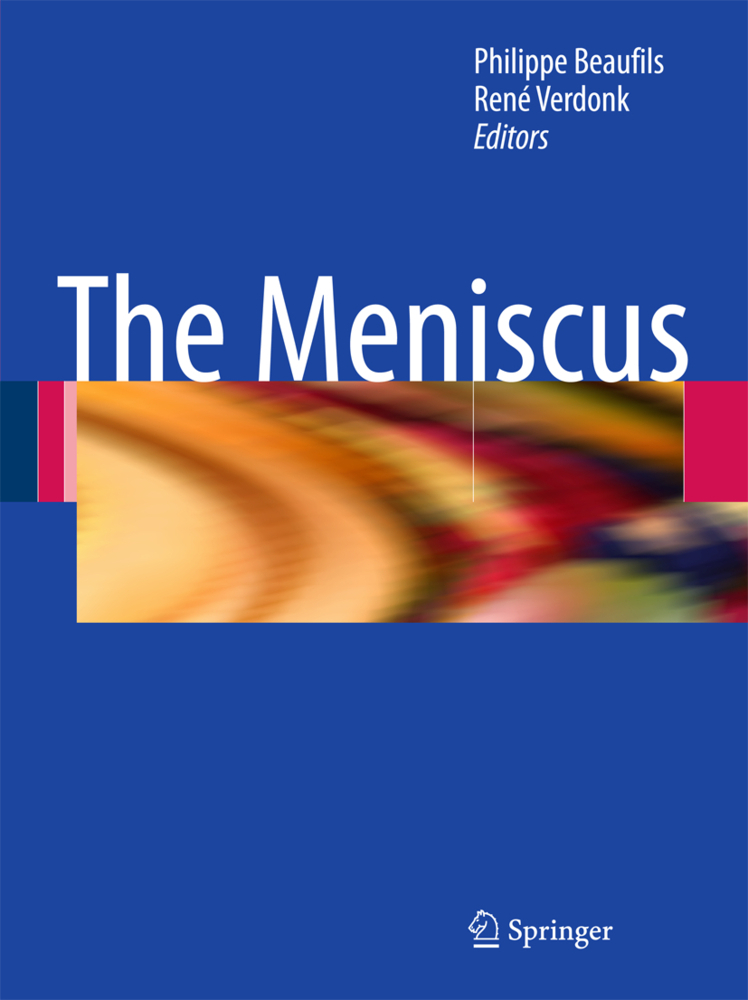Practice of Intramedullary Locked Nails
Scientific Basis and Standard Techniques Recommended "Association Internationale pour I'Ostéosynthèse Dynamique" (AIOD)
Practice of Intramedullary Locked Nails
Scientific Basis and Standard Techniques Recommended "Association Internationale pour I'Ostéosynthèse Dynamique" (AIOD)
Medullary nailing is one of the oldest types of in a way that did not allow the surgeon to be car surgical fracture treatment. Splinting a fracture by ried away by enthusiasm. They impressed by re insertion of plugs made of ebony dates back to porting merits and pitfalls alike in a very realistic the ancient Egyptian culture. As for many other and convincing manner. types of fracture treatment, some outstanding but When we consider the past, we automatically lone pioneers performed what was in their hands confront the question, "What is next?" Where are an art based on intuition. But most of them re today's problems and what could the solutions be? mained lonely pioneers since they could teach The present book discusses the view that medul neither the basics nor the surgical art without a lary nailing is able to compensate for the distur deeper understanding of the underlying science. bance to blood circulation brought by the frac It took the tenacity of Kuntscher to establish ture, the surgical procedures, the instruments and medullary nailing as an accepted method of treat the implants. On the one hand, it is apparent that ment world-wide. It is a method that is attractive there is potential for biological improvements, because of its apparent simplicity and tolerance of specifical in terms of avoiding or reducing trau the procedures. Kuntscher's great achievements mata due to reaming.
3 Bone Circulation and Effects of Experimental Interventions
4 Biology and Physiology of Intramedullary Reaming in the Fixation of Fractures
5 Biomechanics of Locked Intramedullary Fixation of Fractures
6 Intramedullary Nail Systems
7 Time of Radiation Exposure During Intramedullary Nailing Procedures
8 Distal Targeting in Locking Nails
9 Femoral Fractures
10 Tibial Fractures
11 Proximal Femoral Fractures: Operative Technique for Peritrochanteric Fractures
12 Humeral Fractures
13 Ulnar Fractures
14 Complications of Intramedullary Locked Nailing: Infection and Infected Nonunion
15 Complications of Centromedullary Nailing (Excluding Infection).
1 Introduction
2 The Biology of Fracture Healing as Related to Intramedullary Locked Nailing3 Bone Circulation and Effects of Experimental Interventions
4 Biology and Physiology of Intramedullary Reaming in the Fixation of Fractures
5 Biomechanics of Locked Intramedullary Fixation of Fractures
6 Intramedullary Nail Systems
7 Time of Radiation Exposure During Intramedullary Nailing Procedures
8 Distal Targeting in Locking Nails
9 Femoral Fractures
10 Tibial Fractures
11 Proximal Femoral Fractures: Operative Technique for Peritrochanteric Fractures
12 Humeral Fractures
13 Ulnar Fractures
14 Complications of Intramedullary Locked Nailing: Infection and Infected Nonunion
15 Complications of Centromedullary Nailing (Excluding Infection).
Kempf, I.
Leung, K.S.
Grosse, A.
Haarman, H.J.T.M.
Seidel, H.
Taglang, G.
| ISBN | 978-3-540-64079-0 |
|---|---|
| Artikelnummer | 9783540640790 |
| Medientyp | Buch |
| Copyrightjahr | 2002 |
| Verlag | Springer, Berlin |
| Umfang | XI, 170 Seiten |
| Abbildungen | XI, 170 p. |
| Sprache | Englisch |

